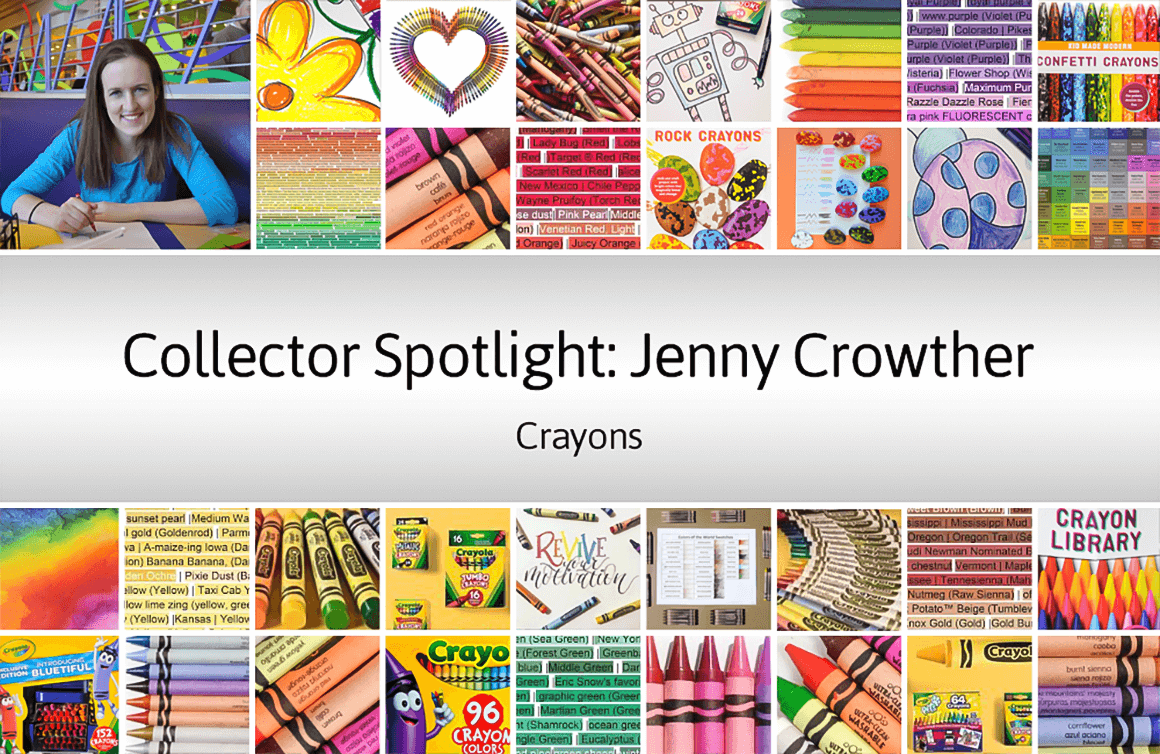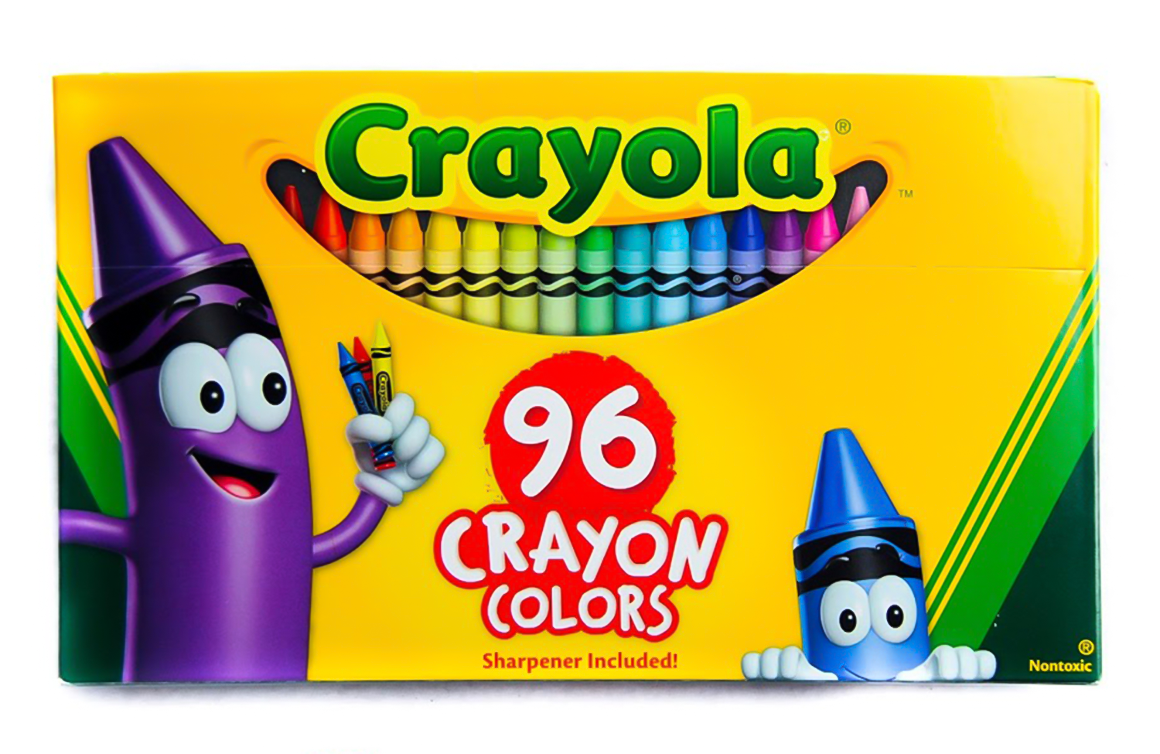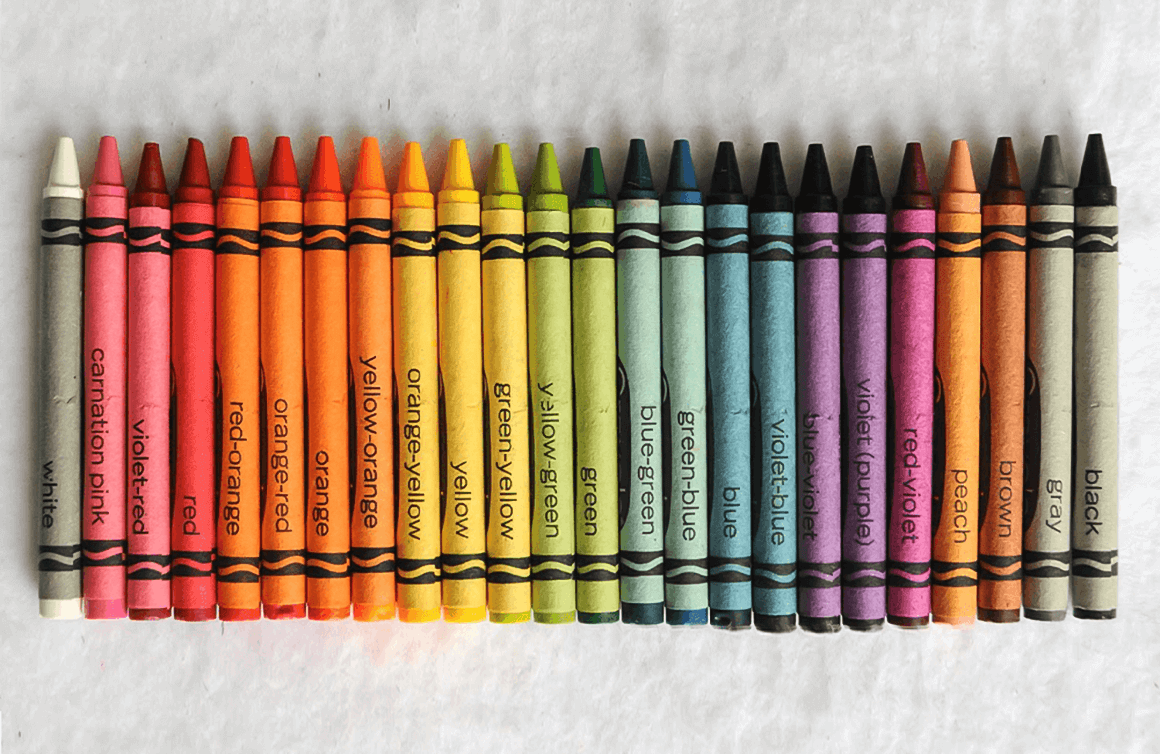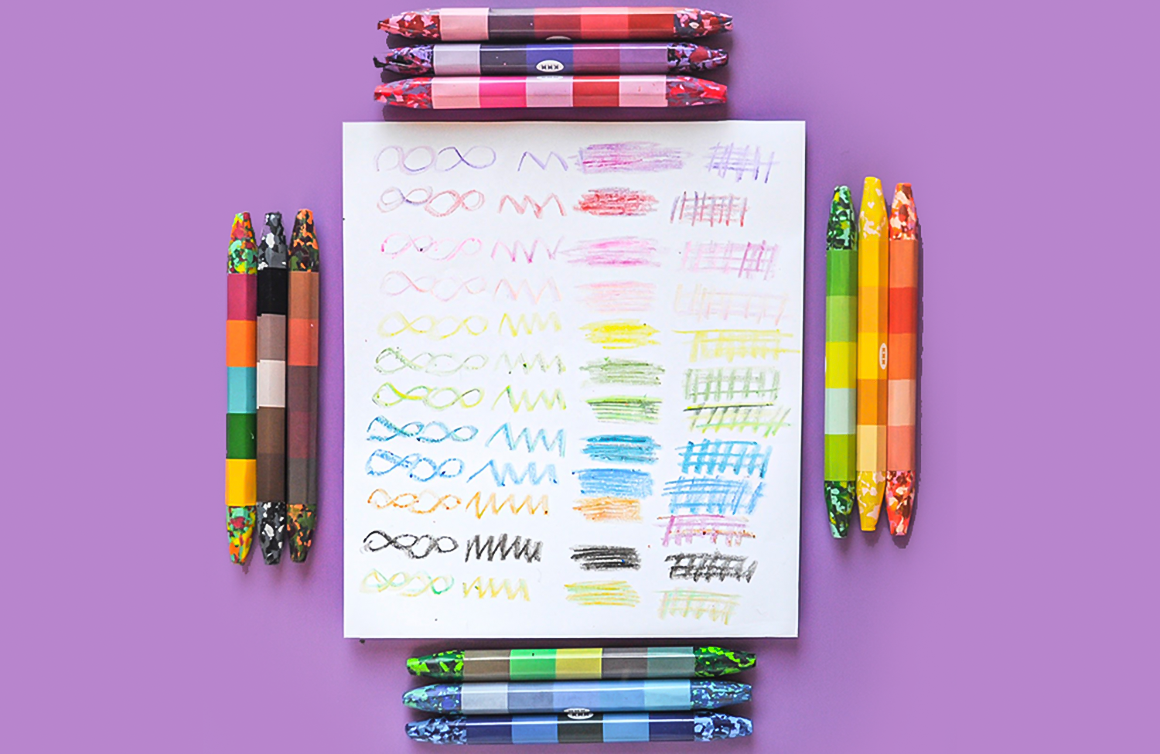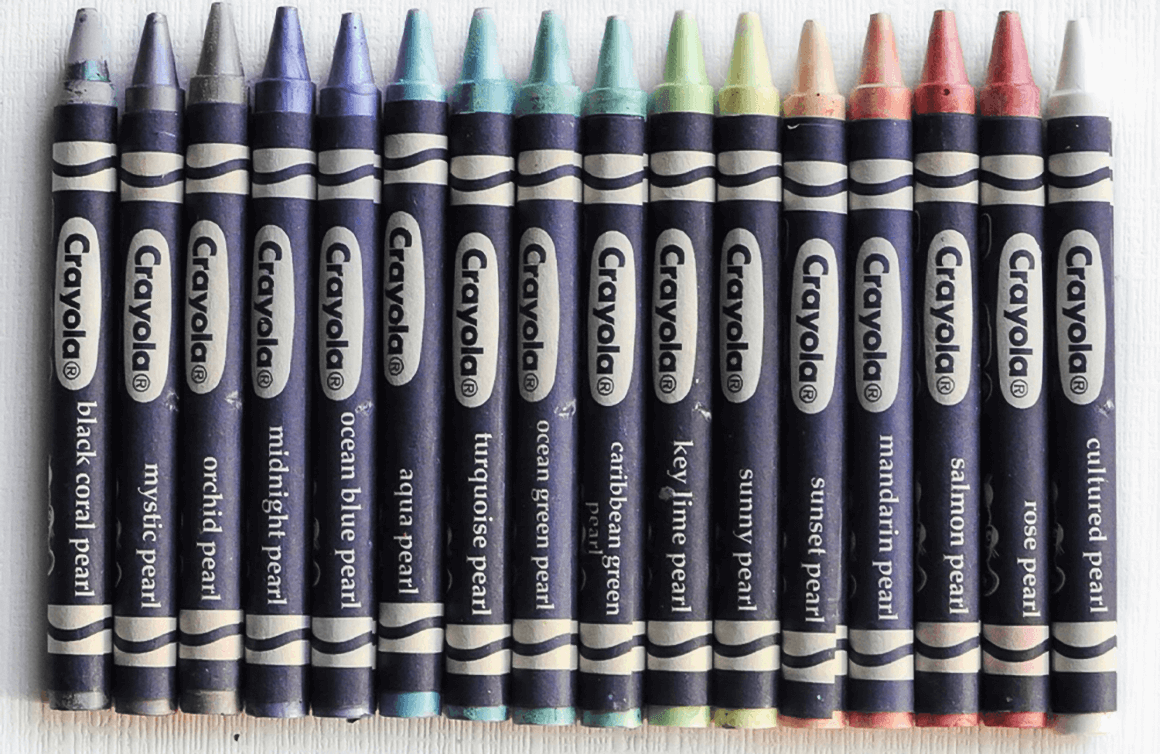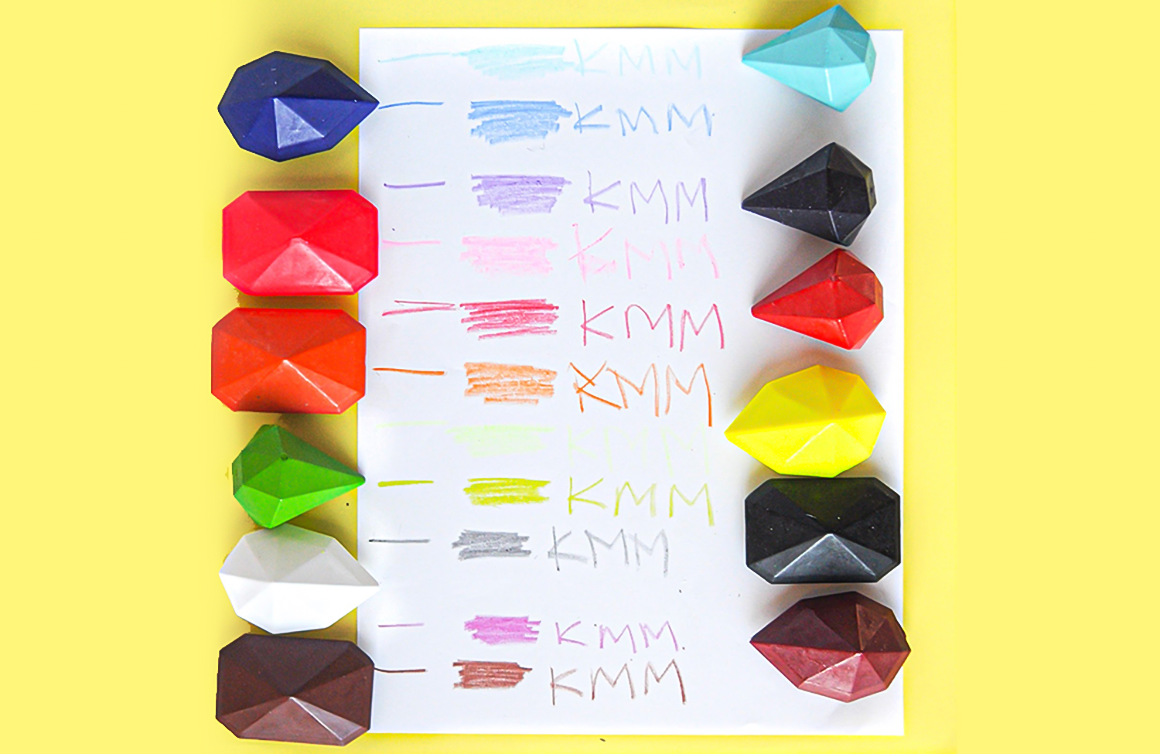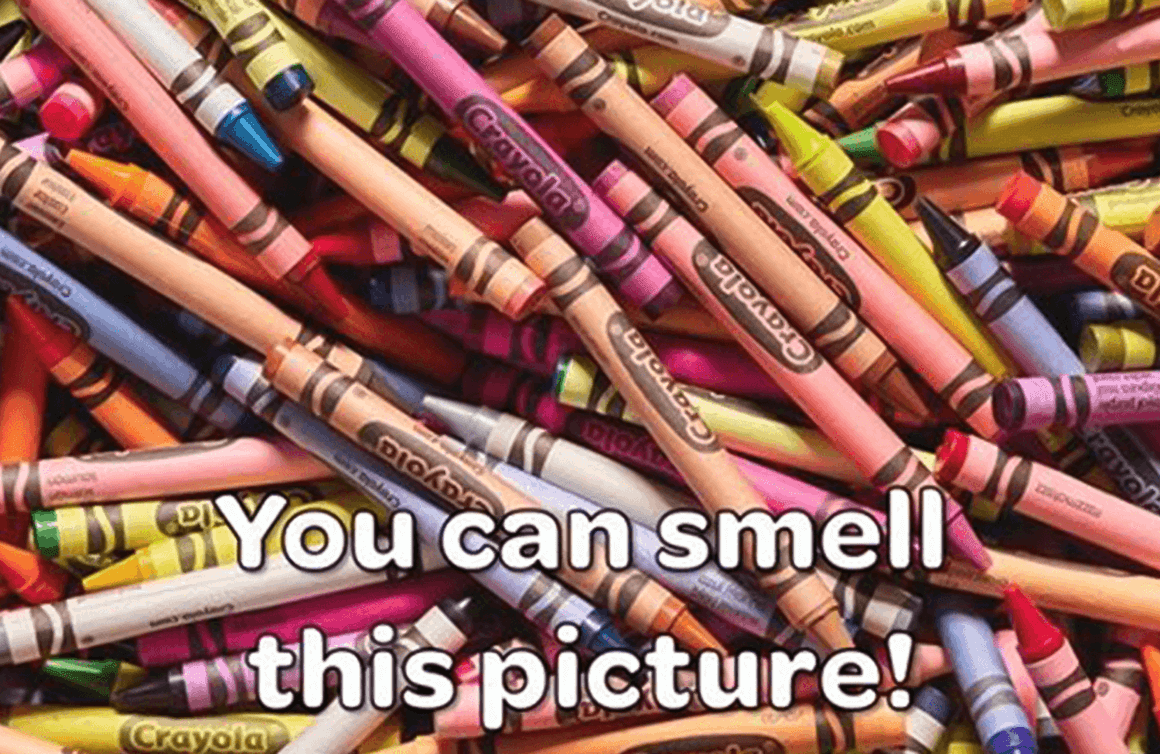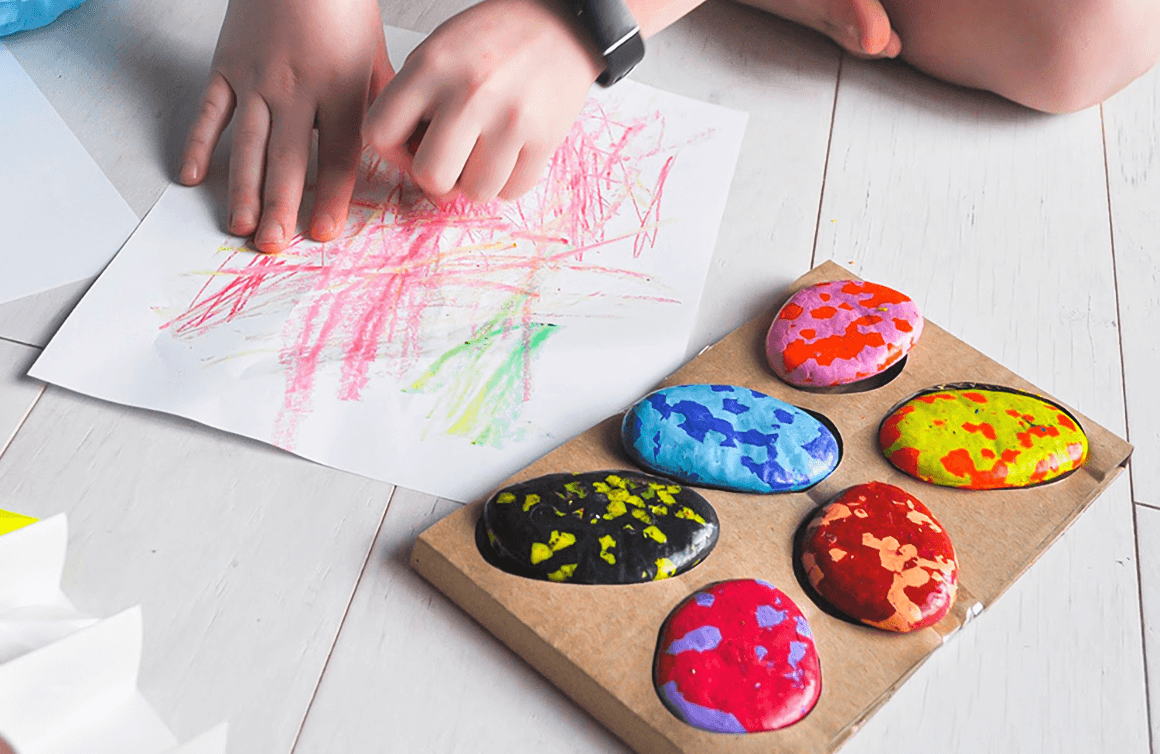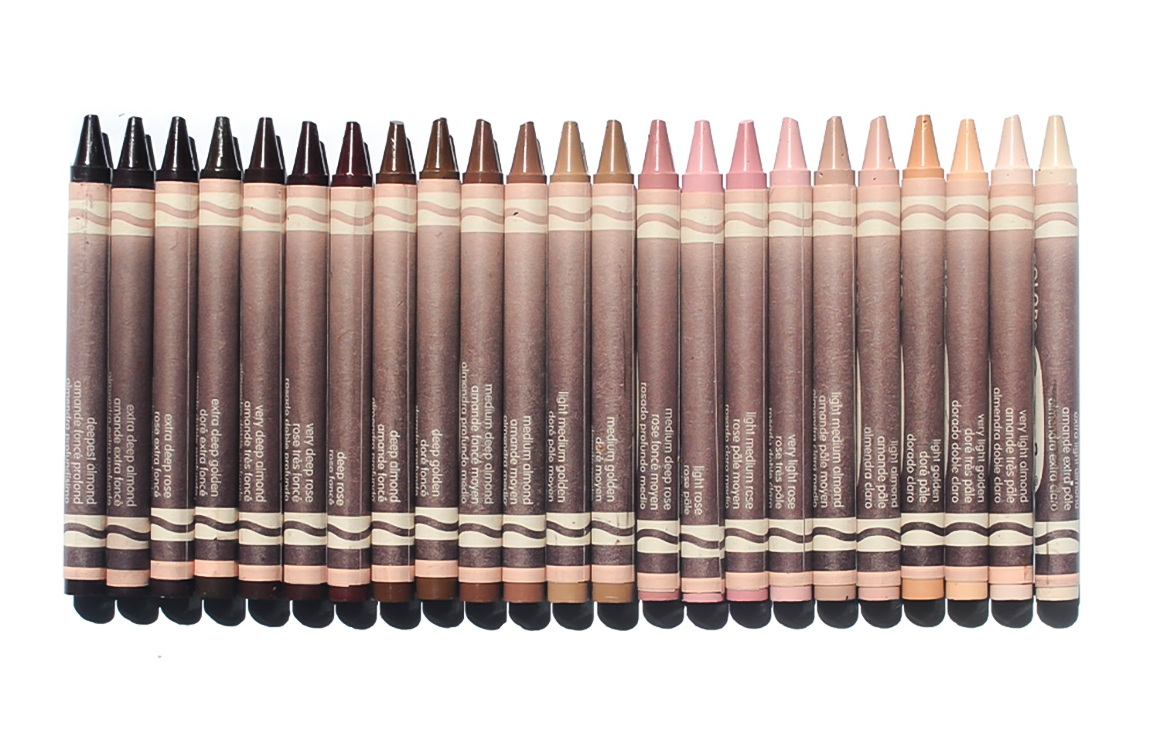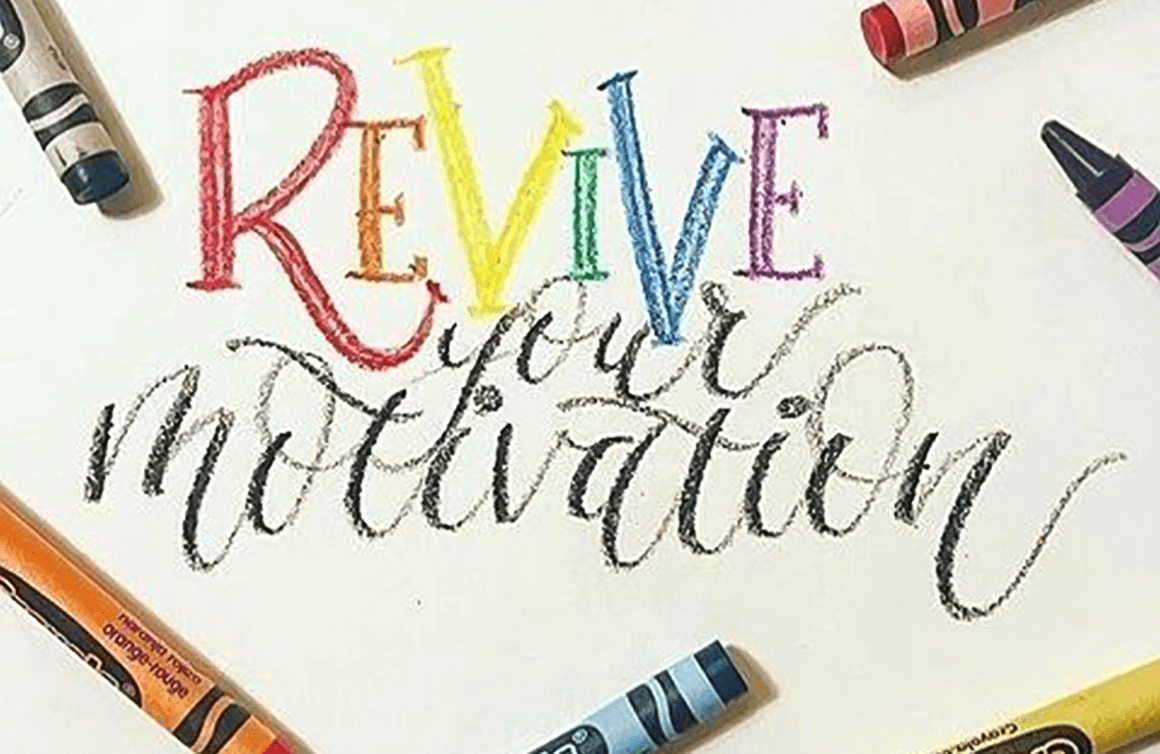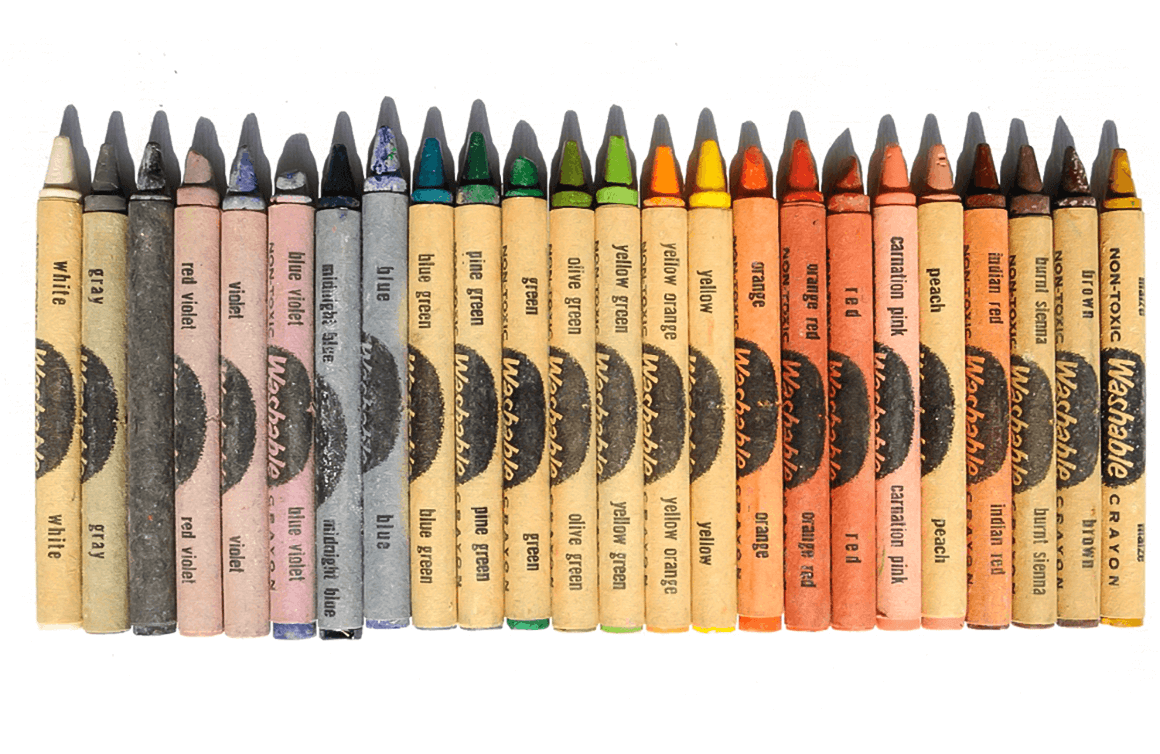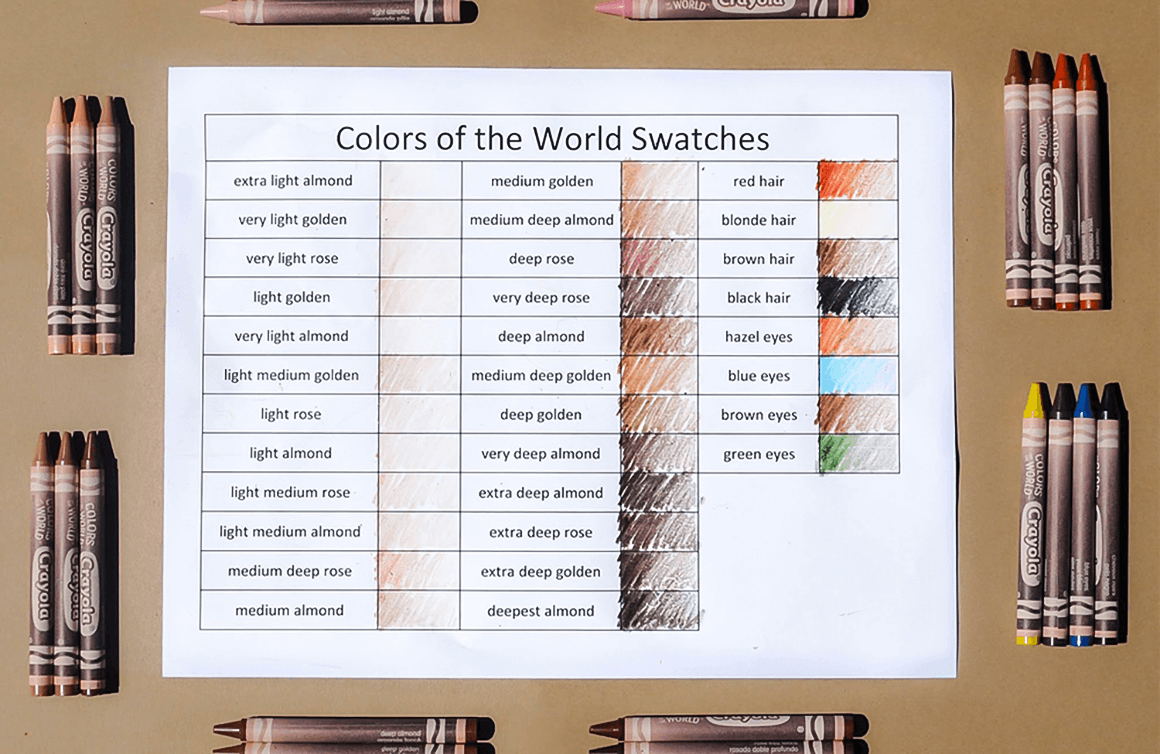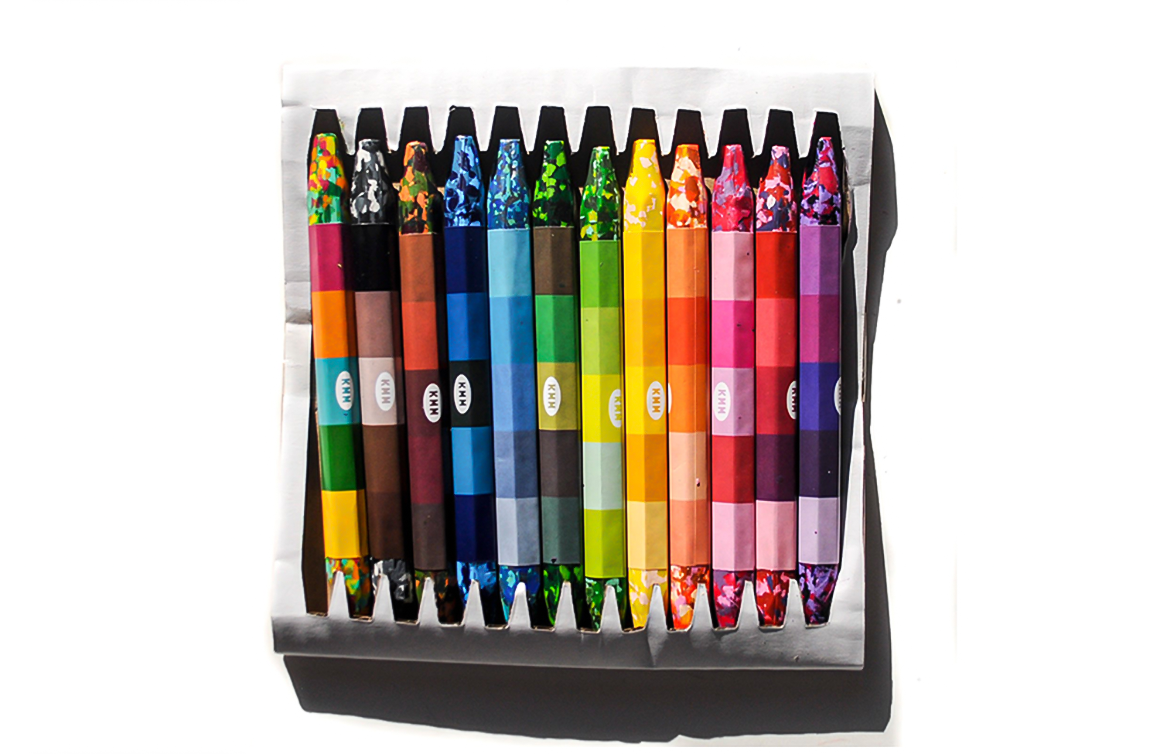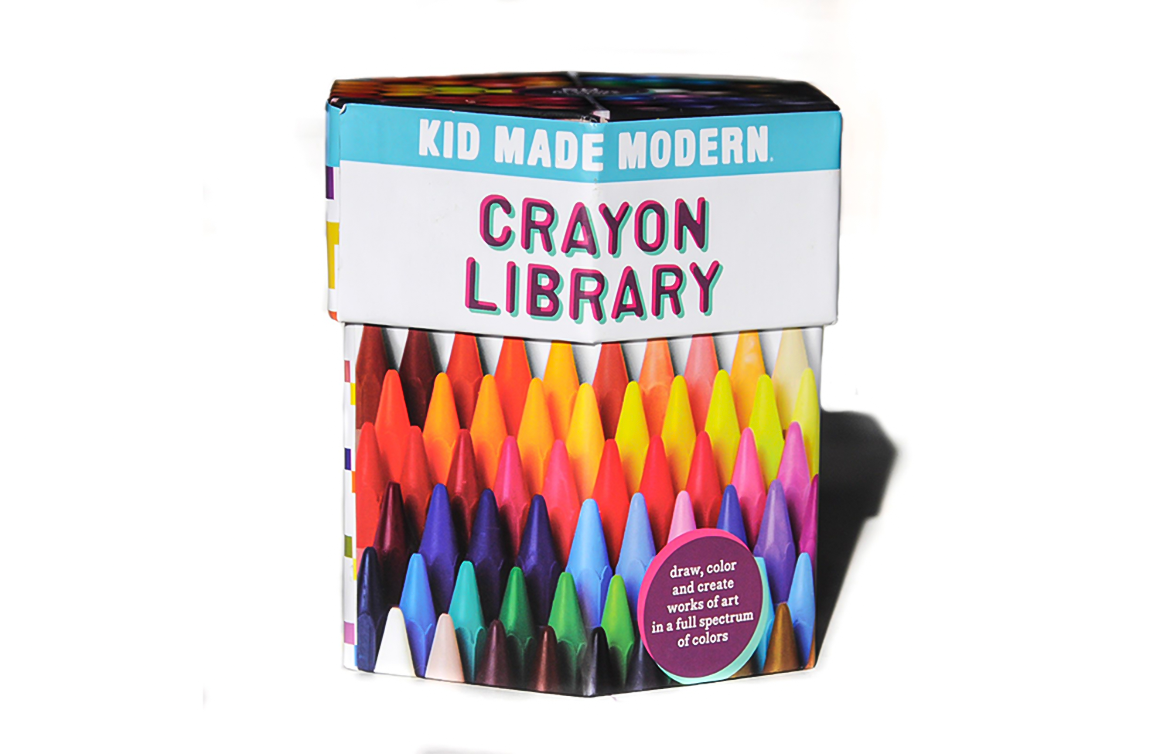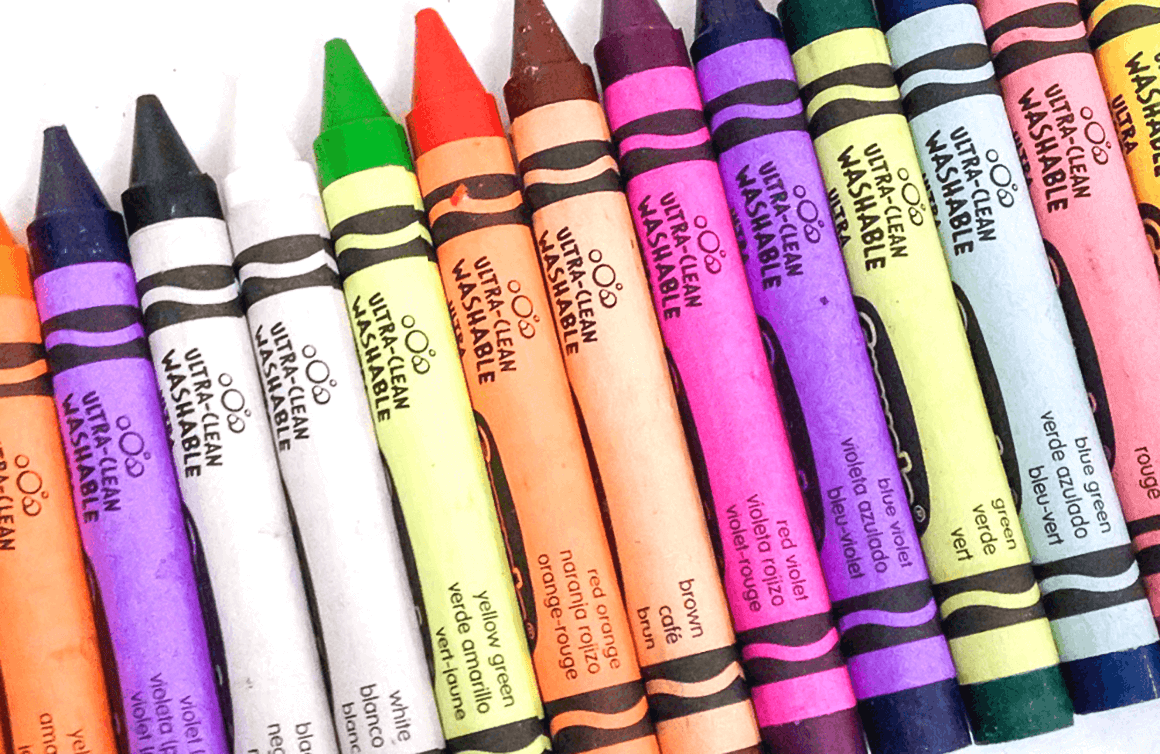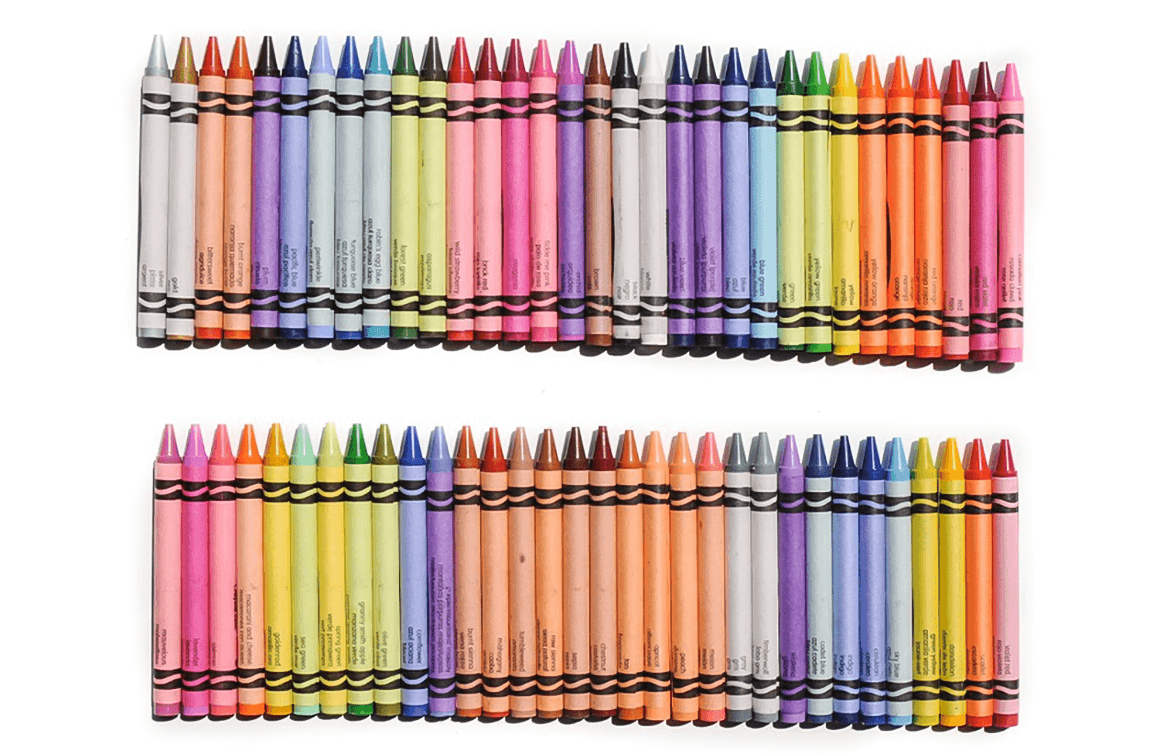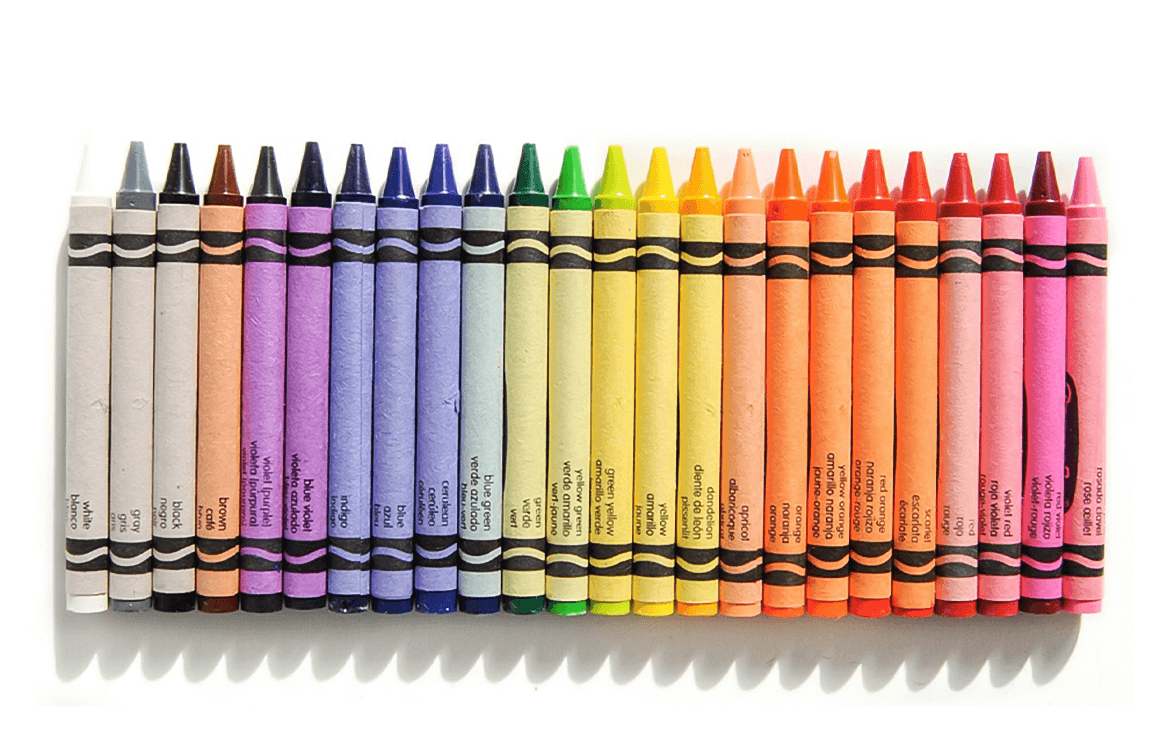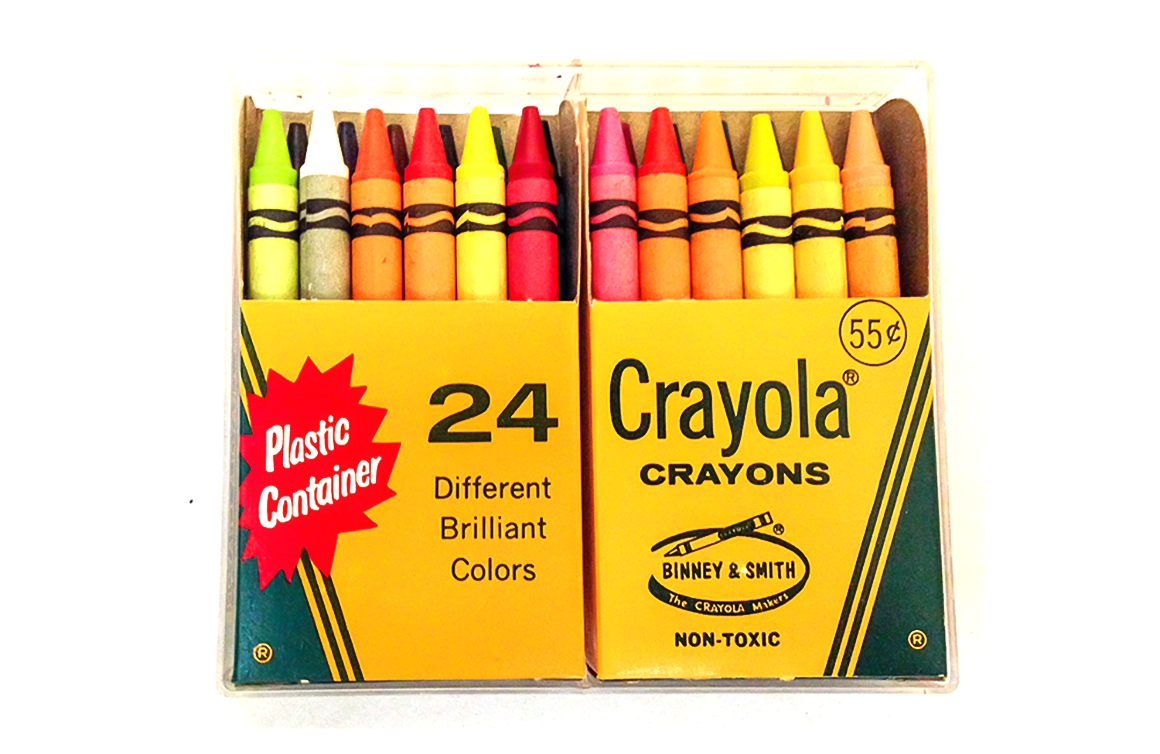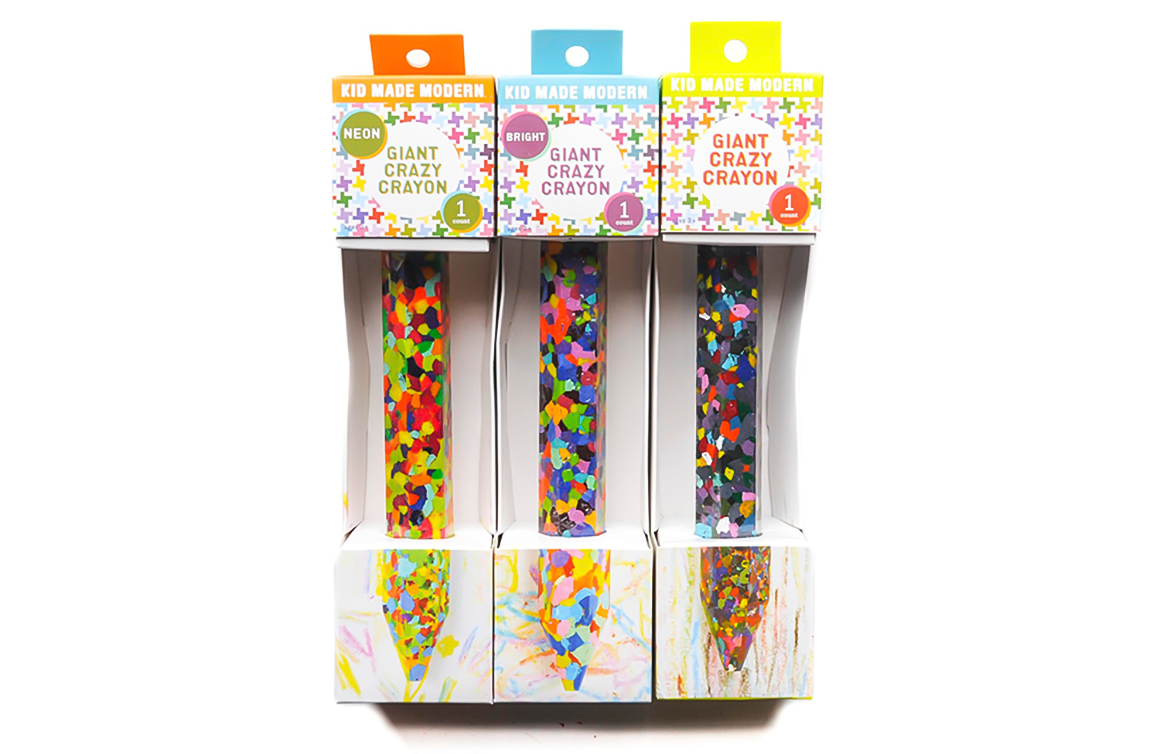How do you describe your collection?
I collect crayons and a few other types of art supplies. Some of the time the lines are blurred with what is considered a crayon versus a coloured pencil or chalk — companies use different terms to describe their products. I have between 600 to 700 individual boxes. I have mostly collected Crayola products, but recently I have branched out into collecting other supplies. I wish I could collect it all — I just really don’t have the space for everything.
My oldest boxes are Crayola Rubens from 1906 and 1918. At that point in time, chalk and paint were already available. Crayola was really trying to appeal to artists by providing a different medium than paint. On the back of the Rubens box it says that artists consider Rubens a substitute for oils, watercolours, and pastels — it won’t blur and will not wash or rub off — and is unequalled for outdoor sketching. I think that’s interesting. People had never seen crayons before so they had to introduce this new concept. I don’t think Crayola knew exactly who its market was so they tried different approaches.
Rubens came in boxes of 6, 12, 18, and 24. I have the 24 count. They were donated to me by one of my website readers, John Corb. He gave me a whole bunch of boxes; I was so grateful to receive these.
When and why did you start your collection?
I was about eight years old when I realized that Crayola Crayons were collectible. I walked to a local grocery store to buy more Silver Swirl crayons and I couldn’t find them. That was the first time I experienced that with a box of crayons. I realized there were a lot more limited-edition ones, so I started collecting them.
How do you display and store your collection?
For crayons, you don’t want to keep them in the light or where the sun can hit them because the paper box will degrade and so will the colours. I use Sterilite storage containers away from the light. I will take the crayons out for a video but most of the time they are in a closet.
For documenting my collection, I take high-resolution photographs with my DSLR to show how beautiful the boxes are on my website. It was a way I could share my collection with the world instead of it gathering dust in my basement. I also try to find out as much information about the item as I can. Crayola started using unique numbers on the boxes around 1980. Before that, crayons were identified by the different artwork and text on the box.
And, I use a spreadsheet to track everything. I’m a nerd. It’s also nice to have that information for insurance purposes.
What do you consider to be the Holy Grail of crayons?
For collectors, specific retired colours are the Holy Grails. Retired colours like True Blue and torch red are sought after. For boxes of crayons, it’s the ones Crayola releases for special events and employee recognition; such as Toy Fair, Crayola anniversaries, or the Oscars that can be the hardest to find.
From my collection, the Silver Swirls are hard to come by and there are different versions of them. Also, the Pearl and Confetti crayons. Crayola does reintroduce certain lines so people can pick up the newer ones. The Colour Mix-Ups/Colour Bursts crayons were rebranded as Confetti.
The crayon boxes are also collectible. People get really interested in boxes from other countries like Canada, Mexico, England, Japan, and the Philippines. Themed Pick Your Pack boxes such as Monster Party, Princess Party, and Rock Star Party are hard to come by. Those releases make collecting a lot of fun and a real challenge.
What advice would you give to someone interested in starting a similar collection?
Identify what you want to collect – boxes, colours, old ones versus new ones, specific years, box counts, special releases, just Crayola or other brands – and start small. Start with collecting just one small part and then once you complete that line go to the next selection of what you want to collect.
eBay is a good resource but we also have a Facebook Group of collectors where we share information about our collections and buy, sell, and trade. One last thing: please be careful when purchasing crayons for children that do not contain an AP (Approved Product) symbol on the back. Some crayons have been found to contain asbestos and you don’t want that.
Visit Jenny’s Crayon Collection online and subscribe to her YouTube channel to see more of Crowther’s collection.
Drop us a line to let us know about your collection of vintage toys and/or games. We just may feature your collection!

